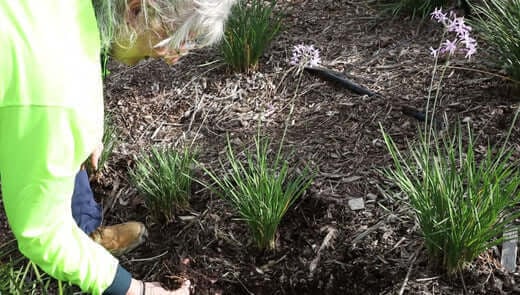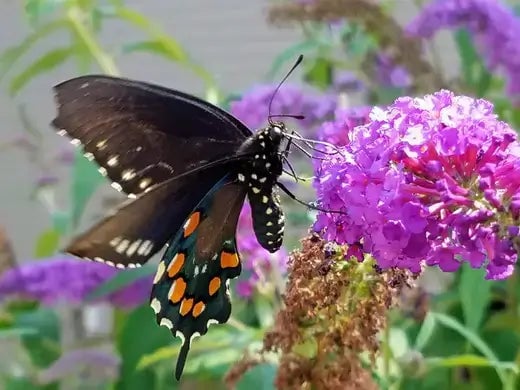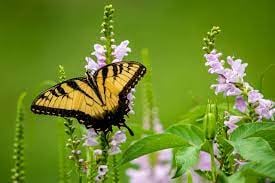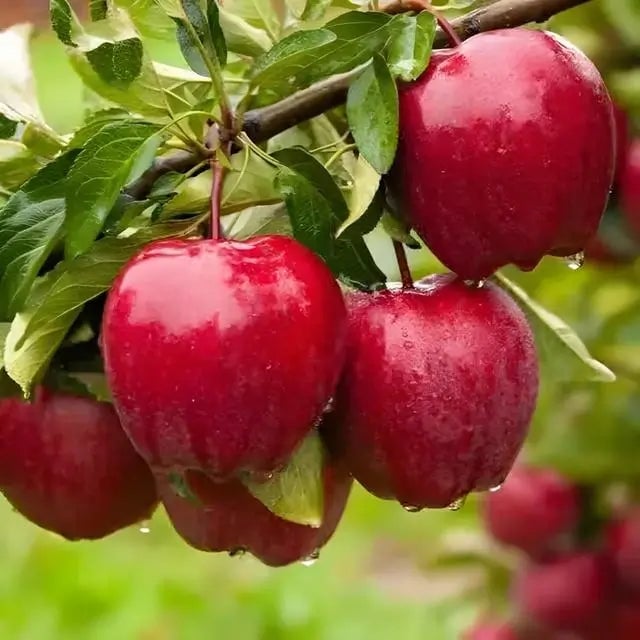Creating a Garden That Gives Back to You
There's something magical about stepping into your garden and feeling like it's doing as much for you as you're doing for it. A garden that gives back isn't just about beauty-it's about a space that nourishes, heals, and connects you to the land. With some planning and thoughtful planting, you can create a garden that returns the love tenfold.
Planting for Wellness and Practicality
Start by thinking about what you truly need from your garden. Want fresh food? Grow tomatoes, peppers, and herbs to make dinner taste like heaven. Need a peaceful spot to unwind? Lavender, chamomile, and rosemary bring calming scents and healing properties. Want something to protect the bees and butterflies? Go for native blooms like coneflowers and bee balm - they'll make your garden buzz with life and beauty.
The trick is picking plants that don't just take but give. Fruits, vegetables, and medicinal herbs offer a harvest that keeps giving. Shade trees and shrubs can cool your home naturally, saving on energy. And those flowers you planted for the pollinators? They'll fill your yard with color while keeping the ecosystem thriving.
Building a Relationship with the Soil
Now, a garden that gives back depends on what's below the surface, too. Healthy soil is like a good neighbor-what you put in, you'll get out. Compost those kitchen scraps and yard clippings, and you'll have a rich base to grow just about anything. Cover crops like clover or vetch can rest your soil in the off-season while adding nutrients.
Mulch works wonders, too; it keeps the soil moist, blocks weeds, and feeds your plants over time. Treat your soil like the treasure it is, and it'll reward you with vigorous, healthy plants that practically take care of themselves.
Why It Feels Like Home
A garden that gives back is more than a patch of dirt with plants in it-it's a sanctuary. Every flower that blooms and every tomato you pick reminds you that nature has your back if you care for it. It's about harmony, balance, and letting your little corner of the earth thrive.
When you dig in, plant purposefully, and nurture what you grow, you build something that'll feed your body, calm your spirit, and remind you that life always comes full circle. That's the gift a garden gives; all you have to do is ask.
A Garden That Keeps On Giving
A sustainable garden is a gold standard for a homeowner. It provides a beautiful and natural setting to highlight and enhance the house's look, provides niches and nooks for privacy and play, and can provide a bounty for the kitchen.
All this beauty returns yearly as the garden matures and requires minimal maintenance if adequately planned and established. But You must make some choices to succeed at the start of the process.
All gardens start with understanding and developing the soil. Knowing the property's pH, soil texture, drainage, and topography is essential to garden planning. Some plants will grow in almost any soil type, but selecting these viable and long-lived plants requires knowing their growing environment. Azaleas are beautiful but need well-drained, acidic soil. Lilacs and clematis are also beautiful, but alkaline soil is preferred. Some plants, like crepe myrtles, do well in most soils. Regardless of the soil test results, almost every soil should be improved by adding compost, manure, and mulch. These provide organic matter and nutrients to the soil and should also be added to the annual maintenance program.
Developing the soil is the tedious but necessary part of the process, but it leads to the rewarding part: selecting and planting the garden. The choices for plantings are almost overwhelming, with every size, shape, color, and texture available. The good news is that they can be broken down into several general types.
Trees are the foundation statement for any garden or home site. Trees provide shade and usually define the rest of the garden surrounding them. They can be significant specimen plants such as oak or elm trees or smaller, more intimate plants such as fruit trees that do not tower over the property. A key consideration about fruit trees is that some varieties are self-pollinating (peaches) while others require two or more pollinating types (apples and pears). Thought should also be given to the use of the fruit produced. Two pear trees can produce more fruit than most families can consume.
Shrubs tend to be border plants that define the boundaries of various areas. Oddly, there needs to be a precise definition of what a shrub is. They are any plant that does not exceed twenty-five feet in height. They can be "woody" like crepe myrtles or more "grassy" or "Viney" like liriope and grapevines. Many of these can grow well along fence lines or on trellises.
Perennial plants are the cornerstone plants for specific areas. They return every year with a show of flowers and color. Bulbs are an excellent choice to start a garden and can be selected to provide blooms throughout the growing season, from early spring to late fall. You can place lantanas, caladiums, begonias, rosemary, and hostas in open sun or shady nooks.
Berry plants are often overlooked as a garden staple. Berries are sensitive to the soil and weather conditions of the area and should be selected carefully. They provide an excellent show of flowers followed by delicious fruits that can be canned and preserved or left for the birds and local animals to eat.
A sustainable garden is desirable in almost every location and is achievable with careful planning and thought. Actual plant selections should be those recommended for your area. A garden professional or county extension agent can supply a list of plants most suitable for your area. Once the garden is established, it will keep giving yearly.
How to Build a Personalized Garden for Relaxation and Mental Well-Being
The transformation of a personal garden space into a sanctuary helps you relax and unwind while supporting your mental wellness. Your outdoor space can become your sanctuary through a well-designed garden, regardless of size, because it allows you to reconnect with nature and find peace despite daily pressures. Through mindful choices of plants and design elements that match your environment and personal taste, you can build a beautiful sanctuary that promotes emotional healing while inviting moments of mindfulness. This guide provides essential steps and considerations for designing and maintaining a garden that becomes a personal reflection of you.
First, start by assessing the available space. Document the sunlight and shade distribution across your garden throughout the day and watch for prevailing wind paths. The details about sunlight and shade patterns will guide you in choosing appropriate plants for different areas to guarantee their growth success. For limited outdoor spaces, explore vertical gardens or container gardening options. Maximize your space by planting on walls and railings or using a small balcony. Your space's physical dimensions and configuration will dictate your garden design, which requires mapping your site to determine planting spaces, pathways, seating arrangements, and desired features such as water fountains or trellises.
Choose a garden style or theme that aligns with your personal preferences. Your garden design preference might feature the orderly charm of an English cottage garden or the peaceful simplicity of a Japanese Zen garden, and you might also love the colorful diversity of a Mediterranean-inspired space. Reflect on your personal preferences: Do subdued colors bring you peace, or do you feel energized by vibrant flowers? Should your garden contain dense foliage or a combination of blooming flowers? Do you prefer a hidden garden surrounded by thick vegetation or an open space that welcomes natural light and soft winds? Determining your design preferences at the start helps you build a unified and deliberate outdoor space that brings you happiness with each visit.
Select suitable plants for your design after developing a general vision for your garden space. A combination of different colors, textures, and pleasant scents can help support mental health and relaxation. The smell of lavender provides relaxation, rosemary enhances mental focus, and jasmine helps lessen anxiety. Herbs such as mint and basil deliver fresh culinary flavors, while their fragrant greenery enhances mood through uplifting scents. Choose flowering plants with soft pastel shades like blues, purples, and soft pinks because these colors create a tranquil atmosphere. Evaluate the maintenance needs of each plant when you select them. If your schedule is busy or you want to minimize gardening tasks, opt for low-maintenance plant species. The garden's main aim of providing relaxation and peace becomes compromised when you focus too much on demanding plants.
Introducing water elements into your garden will strengthen its soothing effects. A small fountain or simple pond generates gentle water sounds that mask city noise while creating a space for meditation. A tabletop fountain offers a simple water feature solution for those who lack space or desire minimalistic garden options. Large and small water features enhance serenity while attracting wildlife and pollinators, strengthening your bond with nature.
Seating is equally essential. Identify locations where you can pause to reflect in silence or read and socialize with a friend. Your garden becomes a welcoming retreat when you add comfortable seating. When seating, think about the best vantage points: You may want your seating area beneath a beloved tree for shade or next to a patch of fragrant herbs. Through deliberate planning, every space in your garden serves a specific purpose, which motivates you to spend more time outside.
While constructing your garden, design walkways that support easy movement throughout the space. A winding path from stepping stones, gravel, or wood chips guides you through different areas while creating visual appeal and encouraging exploration. Add decorative features like sculptures, wind chimes, or hanging lanterns to enhance your garden's charm. Your garden details represent who you are and bring you joy whenever you see them.
Make a consistent upkeep schedule for your garden so that it becomes a nurturing activity rather than a burdensome task. Maintain your garden's health with a regular, gentle watering routine, plant pruning, and cleaning of any fallen leaves or debris. Use this time to be fully present: Take note of plant growth progression alongside daily shadow movements and listen to bird or insect sounds as background music. Gardening is a mindfulness exercise that helps you remain present while reducing stress levels.
Keep in mind gardens exist as dynamic organisms that continuously change over time. Your personalized retreat provides an opportunity to recognize emerging preferences, inspirations, and new needs over time. Experiment with new plant species while redesigning seating arrangements and adding contemporary decorative features to embrace change. Your instincts should direct you to elements that will enhance your well-being. Through careful planning and nurturing maintenance combined with adaptable strategies, you will create a personal garden space that relieves everyday stress and establishes enduring harmony between you and the restorative forces of nature.
Read more

Mulching, if done correctly, can have many benefits for the garden. It is not a very technical thing, and you can easily apply mulch in your garden by yourself. It is essential to follow the co...

Monday, September 19 TN Nurseries best selling butterfly plants 1. Butterfly weed 2. Trumpet vine 3. Coneflower 4. Black eyed susan 5. Daisy Attract Beautiful Butterflies to YOUR Gar...



